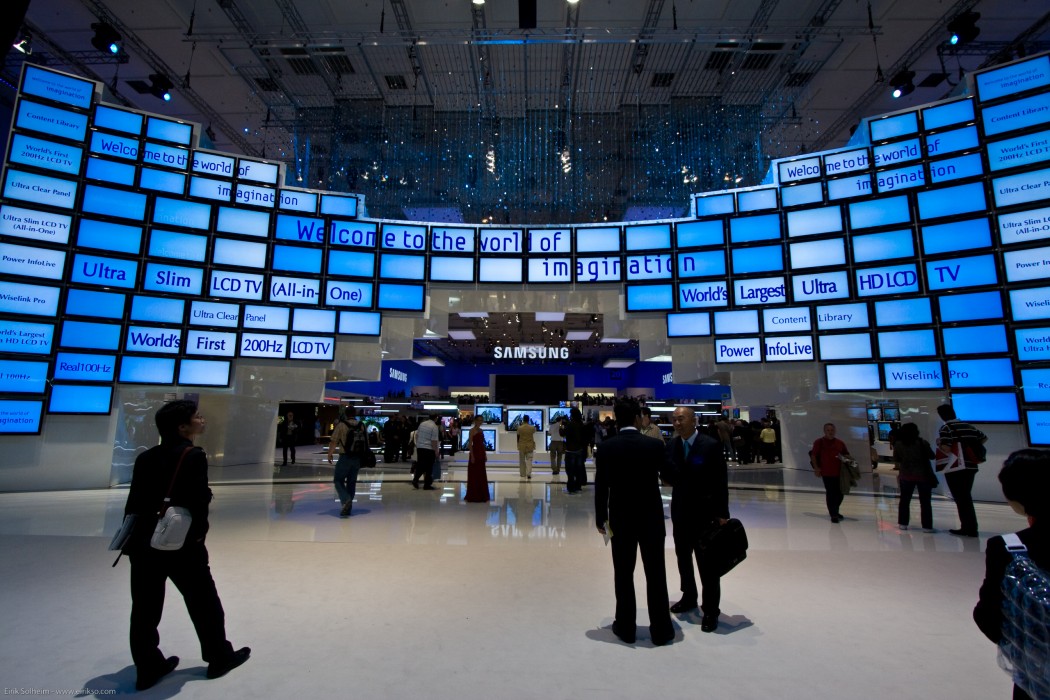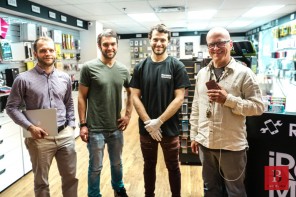Samsung Electronics has been facing a lot of changes since 2010. Galaxy S series took the firm’s prosperity to another level since its announcement in 2009, and its other popular products such as televisions, application processors, and semiconductors are still holding top positions in their respective markets. However, a new era for Samsung is close. The new Galaxy S7 was launched on March 11th of this year. The firm’s expectation of the product is noticeably higher than usual; S7 is geared up with numerous improvements and has eliminated all the major disadvantages of the previous model. Aside from the consumers, even Samsung’s competitors are impressed.
Among all the changes, the group’s decision on its new successor may probably be the largest transformation for Samsung. Lee Kun-hee, the current chairman, was hospitalized following a heart attack two years ago, and he has announced the vice chairman of the group and his son, Lee Jae-yong, as the heir apparent. He is already showing his resolution to innovate in the group by presenting new strategies and modulations in diverse ways. With all these changes, what could we expect from the new Samsung Empire?
Galaxy S7
Samsung Electronics’ phone division is its main source of revenue. The Galaxy series is Samsung’s core product that dominates the global smartphone market, competing against Apple’s iPhone. Its previous model, S6, was considered the best phone of the year in 2015, along with the iPhone 6, in terms of screen, camera, design, and durability. However, it performed poorly in technical parts. Complaints were raised after the S6 abandoned the expandable memory and the water-resistance that its predecessor, S5, had in the past. Additionally, the company’s mismanagement of the launch of S6 hampered the firm’s profits by 4%.
However, Samsung Electronics’ new Galaxy S7 readopted these two features that were missing in the previous model. Other advantageous features such as its edge design and dual pixel technology (which improves autofocus and night photography of camera) are attracting a vast number of consumers. Even the consumers in North America, where Apple is the most popular brand, are leaning more towards the new Galaxy S. “Samsung Galaxy S7 Smartphones are dominating the market in North America”, said Consumer Reports, the largest consumer products magazine in America. Samsung is anticipated to have shipped nearly 10 million Galaxy S7 and S7 Edge handsets in the first quarter of 2016, 3 million more than the initial estimate. Although iPhone 7 will not be available until fall, considering Galaxy S7 series’ current sales performance and its entry into the market before the iPhone 7, the winner in this year’s competition is seems to be Samsung; a good number future Apple consumers already made their expenditures on Galaxy S7 instead of incoming iPhone 7, as S7 is the trend this year.
Corporate Culture
The Vice-Chairman Lee Jae-yong has emphasized his commitment to changes in the group’s old, rigid culture. “We aim to reform our internal culture, execute as quickly as a startup company and push towards open communication and continuously innovate,” he said. The original working atmosphere of Samsung has been ruthless since the company has seriously expanded its operations abroad. Working at least 80 hours per week is a norm for most of Samsung’s employees. Other working conventions in South Korea, such as complicated reporting procedures, hierarchic atmosphere, and after-work drinking sessions, have been main issues of corporate life in Korea for the past decades. Samsung’s commitment to reinvent the corporate culture is also expected to eliminate all the unnecessary norms that negatively affect the group’s performance. By reducing the stress level of employees as an encouragement, a more efficient productivity is prospected for all the subsidiaries in the group, including Samsung Electronics.
Structure of The Group
The last factor that we should consider is the business structure of Samsung group. A chaebol is the most common form of business conglomerates in South Korea, including Samsung. Unlike the structure of most western businesses, chaebols are family-controlled business groups. Family-oriented businesses have been a long tradition of the Samsung group, and this facilitates internal aids or loans between the subsidiaries of the group far more flexible than its counterparts. The group consists of numerous other industries other than the electronics subsidiary, such as heavy industry, chemical, entertainment and financial services. These subsidiaries can potentially aid its electronics department in times of need.
However, despite these benefits, the chaebols have some disadvantages too: an internal dispute in Lee’s family could cause a potential of result mismanagement or a lack of cooperation between subsidiaries in group, including its electronics industry. More individual level analysis may be needed to predict the prospection of Samsung Electronics’ performance. However, the chance of this kind of circumstance occurring seems to be quite low, as there has been no major family scandal so far.
No one can make a perfect prediction about all the technology companies’ futures. The environment of the technology industry is constantly developing. However, we can still forecast the prospection. Samsung has been and is still presenting copious amount of innovative technologies for longer than a decade; it is plausible that Galaxy S7 be a very successful product for the firm. However, the ability to present brilliant ideas is probably one of the most crucial parts in technological industry today. Lee Jae-yong’s new ideas are especially anticipated to give substantial changes, not only for the electronics industry, but also for all the subsidiaries in the group. Although the changes to Samsung’s corporate culture have not been implemented yet, a majority of firm’s employees and key executives have positive expectations about the decision. With all these factors combined, the potential of group this year in particular is expected to be significantly positive.








